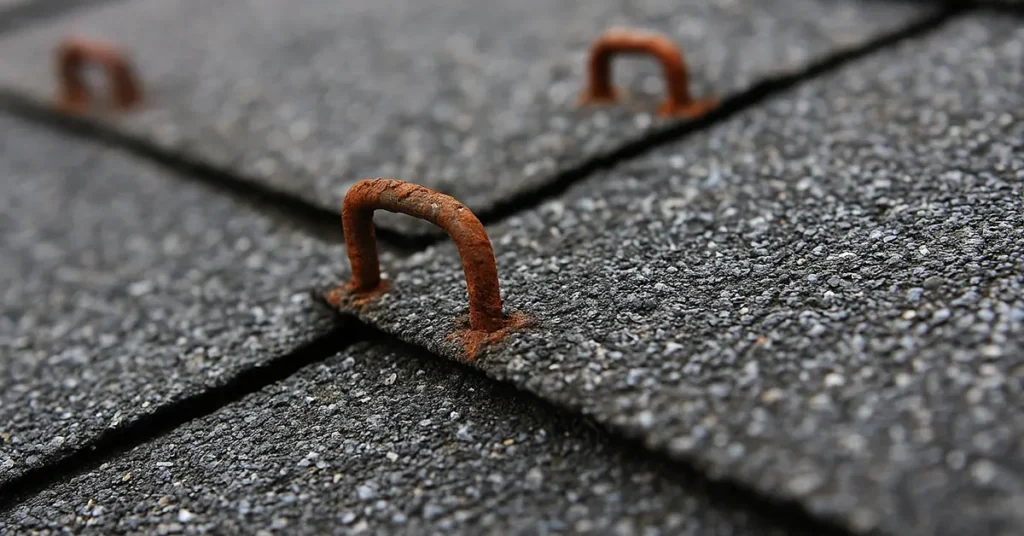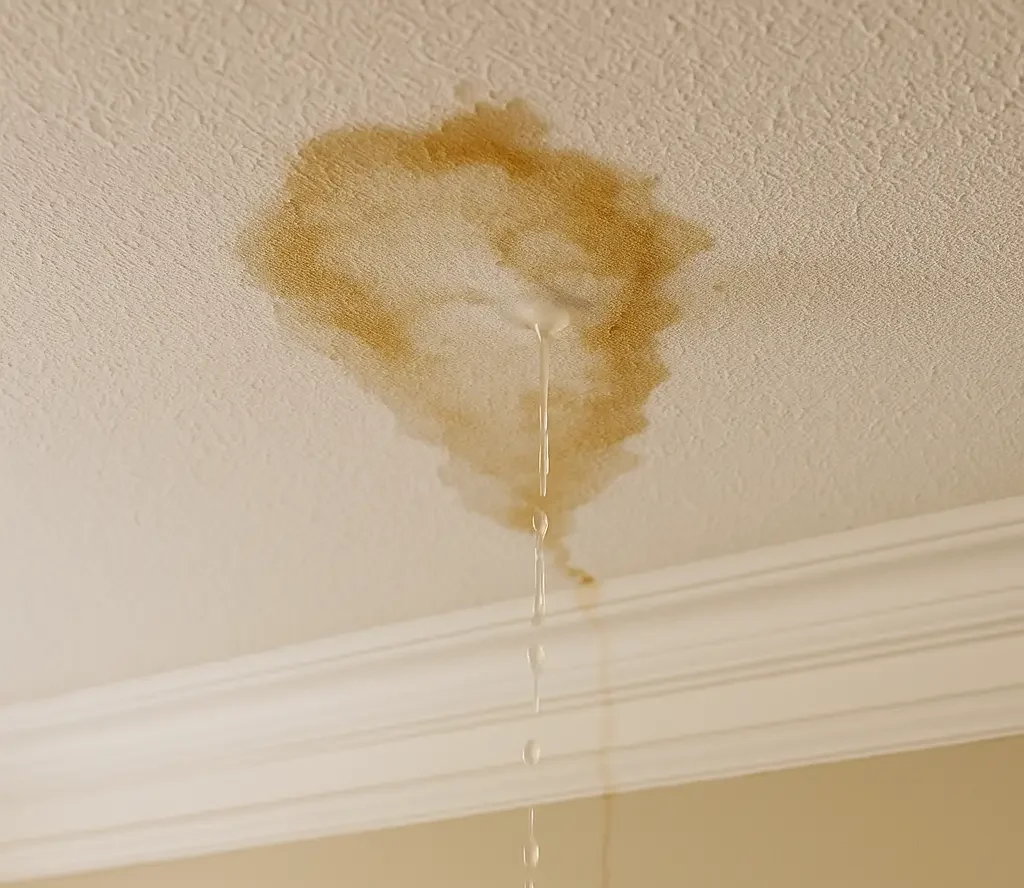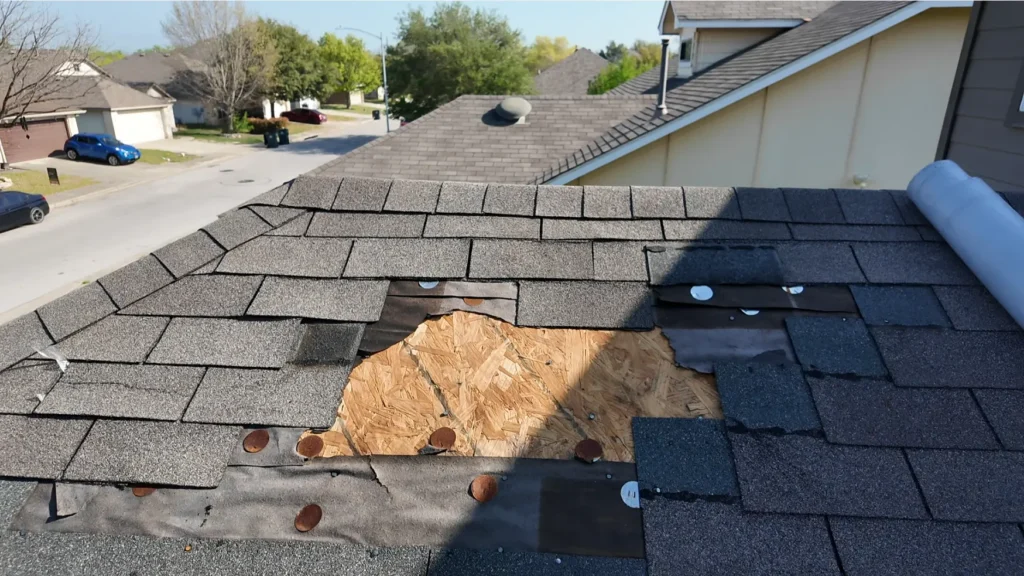When a home inspector climbed onto the roof of a newly built house just outside Austin, he didn’t expect to find signs of trouble. The shingles were pristine. The flashing looked sharp. The build was recent—barely weeks old.
But there they were: tiny metal staples—rusted at the tips—poking up from the decking through the underlayment. Dozens of them.
Turns out, the stucco crew had stapled tarps directly into the roof sheathing to shield the walls during their phase of the build. No one removed them. No one patched the holes. And now, water had a way in.
This article is a warning shot for every Texas homeowner, builder, and buyer. Because a roof leak doesn’t always start with missing shingles or a hailstorm. Sometimes, it starts with a staple.
Why Roof Leaks Start Before You Move In
In a perfect world, every phase of a home’s construction would be a masterclass in coordination. Framing. Roofing. Electrical. Siding. Stucco. But in reality? One trade moves on before the next trade shows up.
The result? Overlap. Rush jobs. And oversights.
The roof—your home’s protective shell—is especially vulnerable to this kind of miscommunication. It’s the first to go on, but also the most likely to get tampered with by trades who have nothing to do with roofing at all.
According to the National Roofing Contractors Association (NRCA), poor detailing during construction is one of the top contributors to premature roof failure. And in Texas—where summer heat, heavy storms, and hail push materials to their limits—there is zero margin for error.
Roofing Staples: Small Tool, Big Consequences
Let’s be clear. Roofing staples themselves aren’t illegal or uncommon. In fact, they’re still used for attaching underlayment or securing felt. But when used incorrectly—or left behind by another trade—they’re a silent saboteur.
Why Staples Cause Leaks:
- They rust. Moisture hits the exposed metal and corrosion begins.
- They expand. Rust causes the metal to swell, prying through the deck or underlayment.
- They puncture membranes. Staples that break through barriers allow water to track into your attic.
In the case above, the inspector noted that some staples were already oxidizing despite the roof being weeks old. In just one rainy season, this new home would’ve had its first leak.
How Municipal Inspections Miss These Problems
Municipal inspectors are stretched thin. In fast-growing areas like Central Texas, they might spend just 5–10 minutes per site inspection—checking code compliance, not craftsmanship.
What they don’t do:
- Examine attic decking from the underside
- Check for leftover staples under underlayment
- Test for penetrations after stucco or siding
- Validate coordination between trades
This isn’t laziness—it’s limitation. Which is why third-party roof inspections are becoming a must-have, not a nice-to-have, especially on new builds.
For additional perspective, see This Old House’s breakdown of what most standard inspections overlook.
Why Coordination Between Trades Is Critical
Every construction site is a relay race. But if one team drops the baton, the whole system fails.
Roofers install decking and underlayment—sealed tight. Then the stucco team shows up, needs to shield the walls, and starts stapling plastic sheeting into the roof. It’s not their job to patch those holes. And the original roofers? Long gone.
This is where general contractors must lead with process. There should be clear protocols for what materials can be fastened where—and who is responsible for restoring integrity after every phase.
Without that? The homeowner inherits the mistake.
What Homeowners Should Look For After a New Build
According to the Texas Department of Insurance, homeowners should be proactive in checking for issues that could void coverage or lead to costly repairs. While TDI outlines key rights and responsibilities in storm-related repairs, the same principles apply to new construction. Builders and subcontractors may not always follow best practices, and it’s up to homeowners to stay informed and inspect their property thoroughly.
If your home is new—or nearly new—here’s what to check:
1. Ask for install photos.
Professional roofers take step-by-step photos showing decking, underlayment, flashing, and shingle layout. If your builder can’t provide them? That’s a red flag.
2. Get into the attic.
Look for daylight peeking through nail holes. Scan for rusted staples, stray nails, or blackened plywood (a sign of trapped moisture).
3. Request a third-party roof inspection.
Don’t rely solely on the city inspector. Bring in a licensed Texas roofing contractor who can give you a clean bill of health—or identify early warning signs before they become real expenses.
Schedule a Free Roof Inspection with Texas Roof Damage
4. Confirm roof warranty details.
Some manufacturer warranties are voided if roof penetration (even by a staple) compromises the membrane. You’ll want to know.
Video: Leftover Staples on a New Roof
📺 Watch the full video of the inspection here:
The Importance of Third-Party Roof Inspections
You get a home inspection. You get a foundation check. Why wouldn’t you get the roof—your home’s first line of defense—independently inspected?
Texas Roof Damage offers:
- Free inspections across Central Texas
- Drone footage and attic review
- Detailed reports with photo documentation
- Insurance claim support if repairs are needed
Whether it’s new construction, a resale, or just peace of mind before storm season—don’t skip the roof.
Explore our roofing services or visit our roofing blog for more homeowner tips.
FAQ: Roof Leak and Construction Oversights
Q: Can roofing staples cause a roof leak?
A: Yes—if they penetrate underlayment or decking, rust, and expand over time, they create a path for water.
Q: Who is responsible when other trades damage the roof?
A: Technically, the trade that caused the damage should fix it—but this is rarely enforced. That’s why third-party oversight is key.
Q: How common is this in Texas new construction?
A: With rapid development and subcontractor turnover, we see issues like this regularly—especially in high-growth areas like Austin, San Marcos, and Round Rock.
Q: Is it worth getting a roof inspection on a brand-new home?
A: Absolutely. Many builders use subcontracted crews, and small mistakes can cost thousands if not caught early.
Q: How fast can Texas Roof Damage perform a roof inspection?
A: Within 24 hours in most Central Texas locations.
Don’t Let a Staple Lead to a Flood
It’s a small piece of metal. But when placed carelessly, it’s a leak waiting to happen.
If you’re in a new build or just moved into a recently constructed home, take action. Schedule a free roof inspection today.




